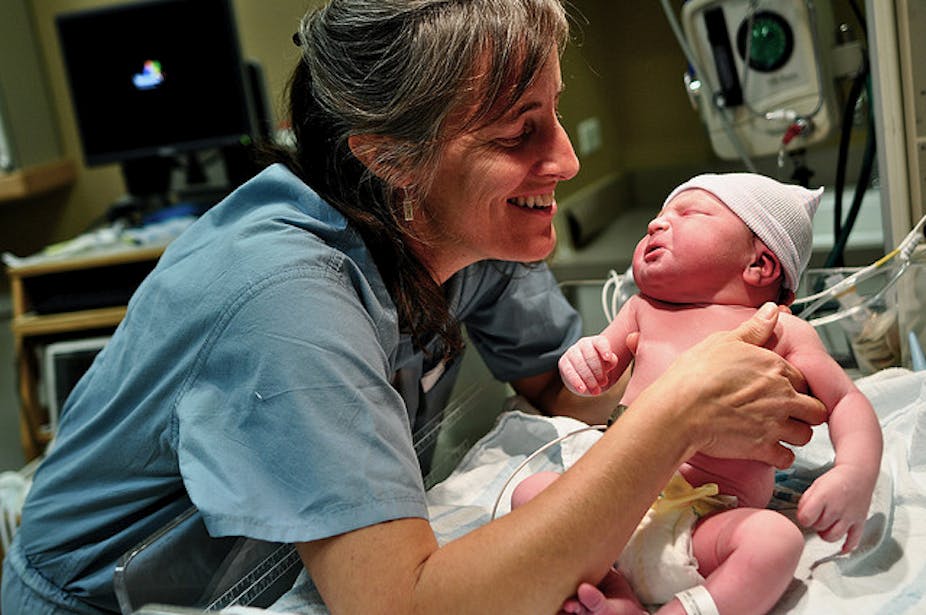A woman who is cared for by the same midwife throughout her pregnancy, labour and after birth saves the public health system around A$550, a new study has found, debunking the myth that it is an expensive boutique service.
The new study compared one-on-one midwife care and standard care, which involved women seeing different midwives or doctors at every check up or at delivery.
It found similar rates of caesarean sections, instrumental births and epidural use, leading the authors to say it showed both models are safe.
The study, published today in the journal The Lancet, involved 1748 pregnant women who had their babies through the public hospital system between December 2008 and May 2011.
The women were randomly assigned to either standard care (877 women) or one-on-one midwife care (871), which was also known as the caseload group.
Unlike other studies, even women who had risk factors such as twins or gestational diabetes, were able to be assigned to the caseload group. A senior obstetrician was allocated to each midwifery practice with urgent hospital assistance provided by rostered medical staff.
Similar health outcomes, different cost
The two groups had similar outcomes in terms of the health of the baby and the level of medical intervention during birth but “total cost of care per woman was $566·74 less for caseload midwifery than for standard maternity care,” the study found.
“We have been holding off for years on offering (one-on-one) caseload midwifery care and and instead offering women very fragmented care in the hospital system. Caseload, one-on-one midwife care was seen as too expensive and not appropriate for women who had these risk factors,” said lead author, Sally Tracy, Professor in Midwifery at University of Sydney.
“What this study shows is that caseload midwifery care doesn’t cost an arm and a leg and, in fact, it’s going to be cheaper on the whole. This paper shows that, with the right communication and collaboration with obstetricians and physicians, the midwifery component is quite safe to offer for women with complex pregnancies (such as twins or gestational diabetes).”
Professor Tracy said the main reason the caseload group had a lower median cost to the public system per woman was that women were encouraged to leave hospital sooner after birth, with their assigned midwife to continue caring for them at home.
While there were no statistically significant differences between the two groups in terms of neonatal and maternal health outcomes, even small differences could account for big savings when they were added up, she said.
“The caseload group had fewer visits, were more likely to start labour spontaneously, requested less pharmacological analgesia during birth, they had a shorter post natal stay in hospital on the whole and slightly fewer caesareans, even though that wasn’t statistically significant,” she said.
“When you look at the numbers, there were slightly fewer babies admitted to the NICU (neonatal intensive care unit) from the caseload group. A day in the neonatal care unit can be horrendously expensive, at over $2000 per day, so it does add up, even if it’s just one or two babies.”
Hannah Dahlen, Professor of Midwifery at University of Western Sydney, welcomed the new study.
“Following hot on the heels of the Cochrane Systematic review that came out in August this year, we now have the largest randomised controlled trial involving women of all risk having continuity of care from midwives,” said Professor Dahlen, who was not involved in the study.
“This is showing this can be done safely and with significant health benefits, but also with significant cost savings,” she said.
“In a world where we have to be accountable for the money spent on health and where health care should be underpinned by the best scientific evidence available, one-to-one care from a midwife gets an enormous tick.”

